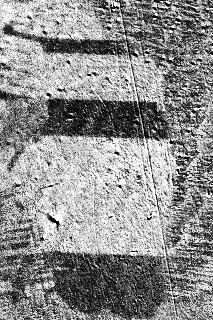Front (physics) on:
[Wikipedia]
[Google]
[Amazon]
In 


physics
Physics is the natural science that studies matter, its fundamental constituents, its motion and behavior through space and time, and the related entities of energy and force. "Physical science is that department of knowledge which rel ...
, a front can be understood as an interface between two different possible states (either stable or unstable) in a physical system. For example, a weather front
A weather front is a boundary separating air masses for which several characteristics differ, such as air density, wind, temperature, and humidity. Disturbed and unstable weather due to these differences often arises along the boundary. For ...
is the interface between two different density masses of air, in combustion
Combustion, or burning, is a high-temperature exothermic redox chemical reaction between a fuel (the reductant) and an oxidant, usually atmospheric oxygen, that produces oxidized, often gaseous products, in a mixture termed as smoke. Combust ...
where the flame is the interface between burned and unburned material or in population dynamics
Population dynamics is the type of mathematics used to model and study the size and age composition of populations as dynamical systems.
History
Population dynamics has traditionally been the dominant branch of mathematical biology, which has ...
where the front is the interface between populated and unpopulated places. Fronts can be static or mobile depending on the conditions of the system, and the causes of the motion can be the variation of a free energy, where the most energetically favorable state invades the less favorable one, according to Pomeau or shape induced motion due to non-variation dynamics in the system, according to Alvarez-Socorro, Clerc, González-Cortés and Wilson.
From a mathematical point of view, fronts are solutions of spatially extended systems connecting two steady states, and from dynamical systems point of view, a front corresponds to a heteroclinic orbit of the system in the co-mobile frame (or proper frame).

Fronts connecting stable - unstable homogeneous states
The most simple example of front solution connecting a homogeneous stable state with a homogeneous unstable state can be shown in the one-dimensional Fisher–Kolmogorov equation: :: that describes a simple model for the density of population. This equation has two steady states, , and . This solution corresponds to extinction and saturation of population. Observe that this model is spatially-extended, because it includes a diffusion term given by the second derivative. The state is stable as a simple linear analysis can show and the state is unstable. There exist a family of front solutions connecting with , and such solution are propagative. Particularly, there exist one solution of the form , with is a velocity that only depends on and {{cite journal , last1=Uchiyama , first1=Kohei , title=The behavior of solutions of the equation of Kolmogorov–Petrovsky–Piskunov , journal=Proceedings of the Japan Academy, Series A, Mathematical Sciences , date=1977 , volume=53 , issue=7 , pages=225–228 , url=https://www.researchgate.net/publication/38389672, doi=10.3792/pjaa.53.225 , doi-access=free

References